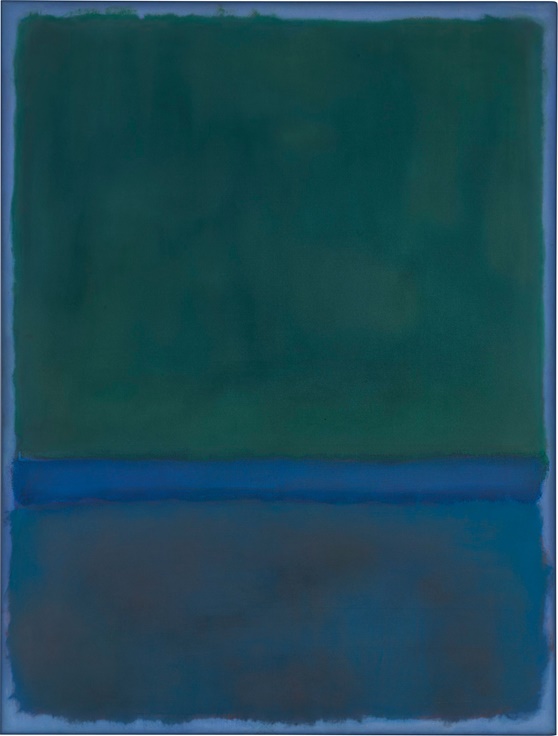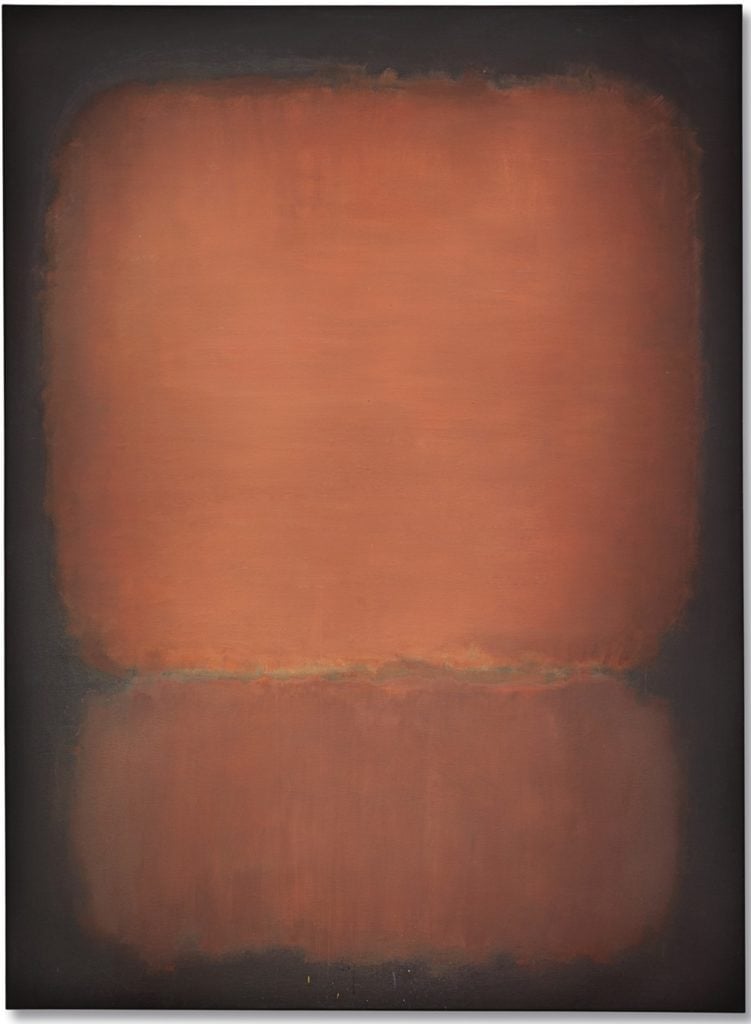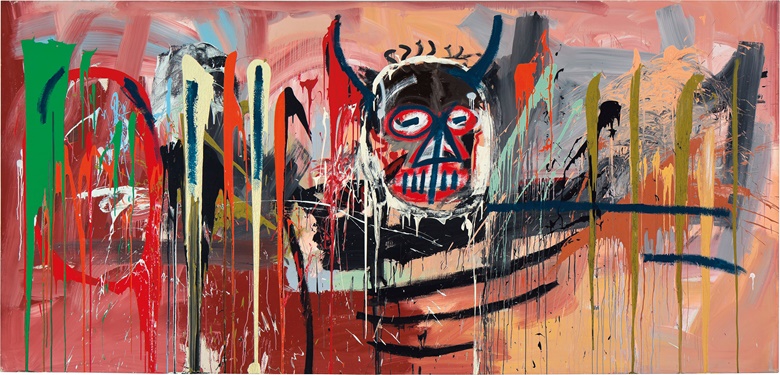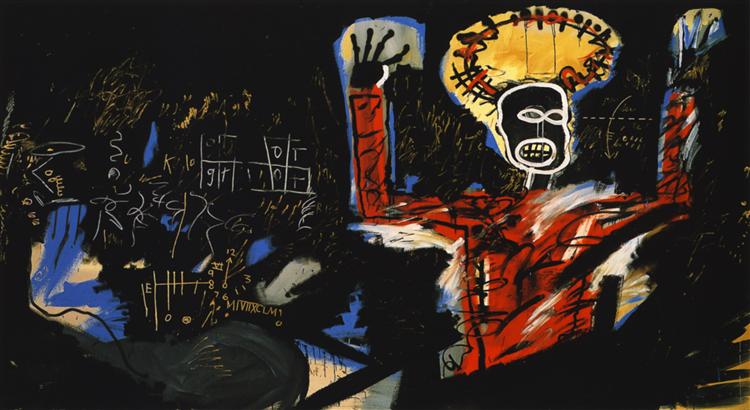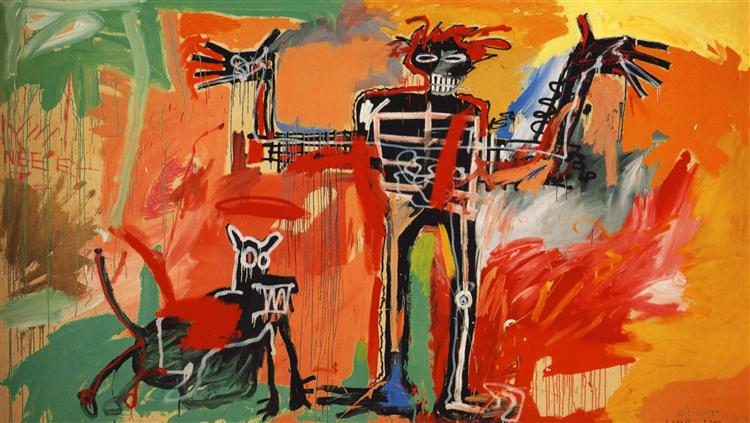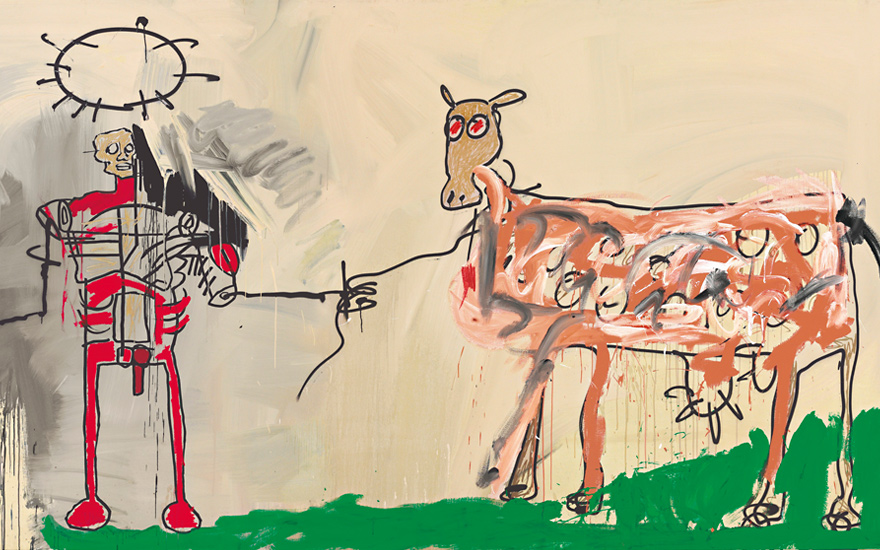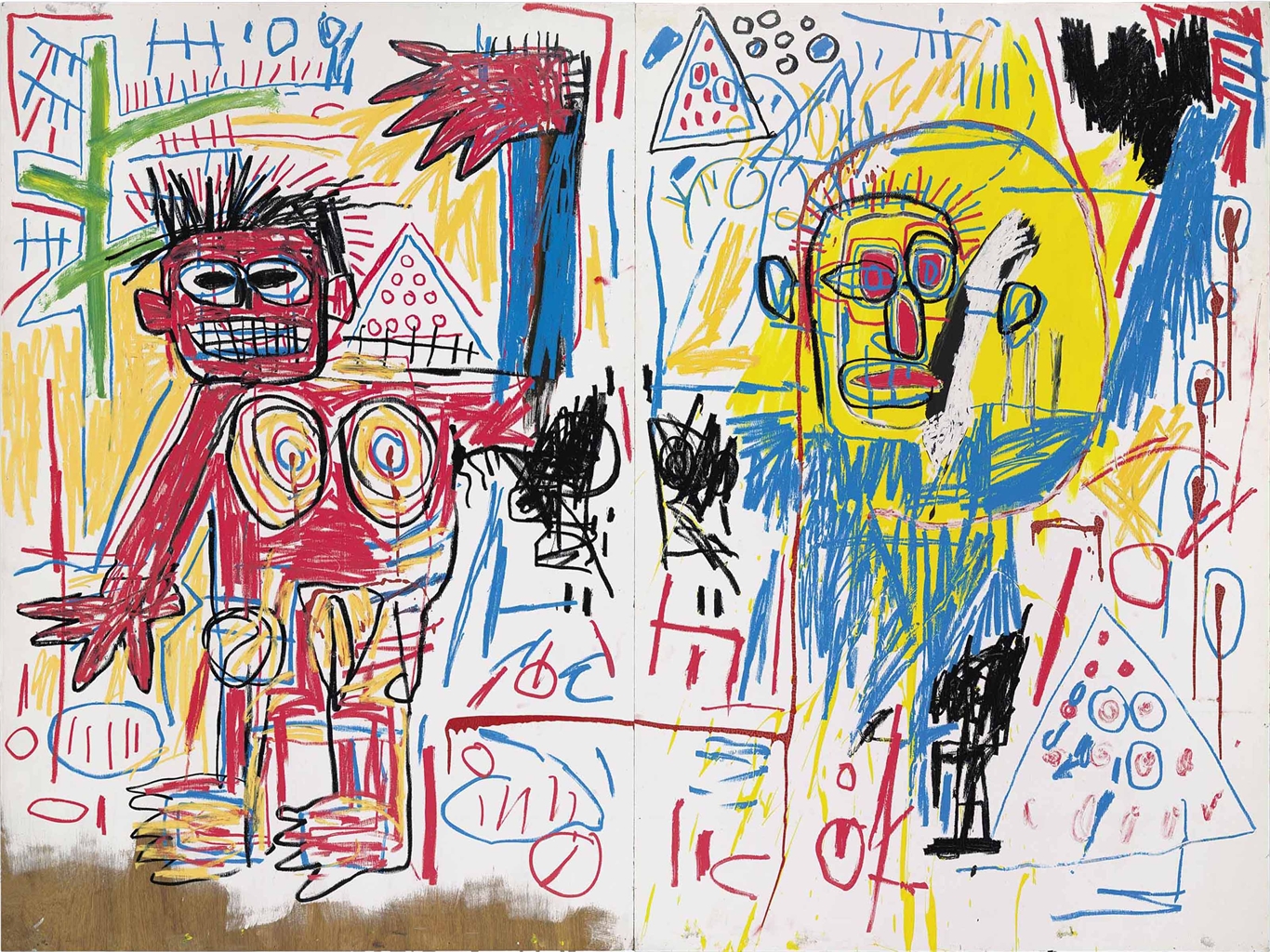Leading Christie’s Evening Sale of Post-War & Contemporary Art on May 10, is Mark Rothko’s pivotal 1957 canvas, No. 17 (estimate: $30-40million). With its vibrant, verdant hues, No. 17 is emblematic of the experiential nature of Rothko’s art—a manifestation of what one critic called the “immediate radiance” of the paintings from this period of the artist’s career. One of the artist’s rare “blue” canvases, this work belongs to a select group that marked the culmination of a short period during which he executed a number of brightly hued works and just a few months before he embarked on a series of paintings that have become widely regarded as the pinnacle of his career, the Seagram Murals (Tate Gallery, London).
This painting was featured in the vital 1961-1963 Rothko retrospective, which traveled across Europe championing the cause of Abstract Expressionism and confirming Rothko’s status as one of its vanguards. The retrospective’s first stop in Europe was the seminal exhibition at The Whitechapel Art Gallery in London, which was where much of the British Public first encountered Rothko’s work.
Following the retrospective, No. 17 was acquired by an important private Italian collection, where it remained unseen by the public for the next several decades. However, it reemerged into the public eye in 2001 when it appeared as a central part of a major exhibition mounted by the Fondation Beyeler. It was there that the curator described No. 17 as “a fine example of…his virtuoso paint handling…” Following the exhibition, the painting was acquired by a private collection, where it has remained until today.
Brett Gorvy, International Head of Post-War and Contemporary Art, remarked:
"No. 17, is a strikingly beautiful canvas that comes with an exhibition history that places it within the canon of Rothko’s most important paintings of the late 1950’s. We are particularly pleased to be presenting this work to the marketplace at a time when there is such tremendous demand for examples by Rothko of this remarkable quality. With its vibrant, enveloping surface, and its freshness to the auction market, we are confident that No. 17 will appeal to a broad global audience."
No. 17 is being sold on the heels of the tremendously successful sale of
Rothko’s 1958 painting, No. 10, which realized $81,925,000 against a high estimate of $60 million at Christie’s New York, in May 2015. No. 10’s strength at auction demonstrated the tremendous demand for works of this quality by Rothko in the global marketplace, which continues to exist in full force today.
No. 17 was produced at the height of Rothko’s painterly powers.
- Produced at the dawn of his mature period, and just a short time before he embarked on what would become his magnum opus, the Seagram Murals, this painting encapsulates all of the drama and psychological intensity of an artist who became one of the most celebrated and influential artists of the twentieth century.
- Sandwiched between both these blocks is a strip of high-keyed azure blue, the active edges of this thin strip increasing their impact by bleeding into the neighboring areas with intoxicating results. Rothko always insisted that it was here, where the edges of his painterly passages meet, that the true essence of his paintings could be witnessed.
- This painting encapsulates all of the drama and psychological intensity of an artist who became one of the most celebrated and influential artists of the twentieth century.
- Following Whitechapel, the retrospective traveled to Amsterdam, Brussels, Basel, Rome before finishing at the Musée d’Art Moderne de la Ville de Paris in January 1963.
- Visitors to the exhibition described their reaction to the artist’s paintings as “Shocked… Spellbound… Transformed” (quoted in “How Rothko Won Over Britain,” Huffington Post, February 2, 2012 [accessed March 23, 2016])
- A current curator at the Whitechapel, Nayai Yiakoumaki, called this exhibition one of the artist’s most significant. “This exhibition is very important because it introduced his work to the British public for the first time, in such a large volume and a public gallery… [From] this exhibition on, the art world was captivated by Rothko and subsequently, [Tate Director] Norman Reid, approached the artist to discuss a purchase of works…culminating with the substantial donation of eight of the Seagram Murals to the Tate in 1970” (N. Yiakoumaki, ibid.).
- In 2001, No. 17 (also in the past known as Green on Blue on Blue) appeared at a major exhibition mounted by the Fondation Beyeler in 2001.
- During its time out of public view, the painting was an important part of a private Italian collection and its exhibition in Basel was the first time the work had been on public display for nearly thirty years.
Brett Gorvy, Christie’s International Head of Post-War and Contemporary Art, remarked: “We are very proud to lead our evening sale with this truly exceptional work by Basquiat. Untitled is a remarkably powerful canvas, which instantly engulfs any viewer standing in its monumental presence. Untitled is among the top three paintings from the tremendously important body of work that the artist executed in 1982 while in Modena, Italy, which would go on to shape the rest of his career. It is also the cover image of the artist’s Catalogue Raisonné. Due to its striking visual impact, its demonic central figure and its significance within the cannon of Basquiat’s career, we are confident that its supreme quality and rarity will command tremendous interest from the world’s leading international collectors and it is set to realize one of the highest prices for the artist at auction.”
The full force of the artist’s energy can be witnessed across every inch of this vast canvas. From the lavishly fashioned demonic figure in the center of the canvas, to his brazen use of painterly drips, splashes and impulsive brushwork, the surface of Untitled acts as a totem to Basquiat’s unencumbered talent. Painted during his trip to Modena in Italy, Untitled belongs to a significant group of paintings that helped to forge his reputation as one of the most exciting and radical artists of his generation.
Basquiat’s dramatic figure dominates the canvas, with a face that displays the full force of his painterly prowess. This central subject has often been identified as a self-portrait of the artist. In contrast to the precise definition of the devil figure, Basquiat orchestrates a flurry of loose drips and splashes of paint set amidst of expressionistic brushstrokes that shows him to be a phenomenal colorist.
Untitled is the largest in a series of paintings which Basquiat undertook during two periods he spent in Modena, Italy in the spring of 1981 and 1982. He was initially invited to Europe by Emilio Mazzoli to participate in his first ever one-man show after the dealer saw the artist’s work in January 1981 at the legendary New York/New Wave show at New York’s P.S. 1. After the initial trip he returned again in March 1982 and it was during this stay that he painted Untitled, as well as
Profit 1
and Boy and Dog in a Johnnypump,
which are widely considered to be the artist’s three most important paintings of this prime period.
1982 was a marquee year for Basquiat as it saw him continue his meteoric rise within the New York art world as he was rewarded with his first solo show at Annina Nosei's gallery. He also made an important trip to Los Angeles where he was introduced to—and proved to be a major hit with—influential collectors such as Eli and Edythe Broad, Douglas S. Cramer and Stephane Janssen. He was also the youngest of 176 artists to be invited to take part in Documenta 7 in Germany.
Basquiat’s work found favor with many influential critics who had been yearned for the return of ‘the expressive’, ever since the triumph of Minimalism in the late 1960s and 1970s. In Basquiat they found a new champion who clearly reveled in the joy of the artist’s hand. As Italian curator Luca Marenzi, once observed: “Basquiat is art’s answer to Jimi Hendrix…” (L. Marenzi, ‘Pay for Soup/Build a Fort/Set that on Fire,’ in Basquiat, exh. cat., Museo Revoltella, Milano, 1999).
Top Five Prices for Basquiat at auction include:
1. Dustheads, acrylic, oilstick, spray enamel and metallic paint on canvas, 1982
Estimate: $25-35million | Price Realized: $48,843,752
Sale of: Christie's New York: Wednesday, May 15, 2013
2. The Field Next to the Other Road, acrylic, enamel spray paint, oilstick, metallic paint and ink on canvas, 1981.
Estimate: $25-35million | Price Realized: $37,125,000
Sale of Christie's New York: Wednesday, May 13, 2015
3. Untitled, acrylic, oilstick and metallic spray enamel on canvas, 1981
Sale of: Christie's New York: Tuesday, May 13, 2014
Estimate: $20-30m | Price Realized: $34,885,000
4. Untitled, acrylic and oilstick on wood panel, 1982
Sale of: Christie's New York: Tuesday, November 12, 2013
Estimate: $25-35m | Price Realized: $29,285,000
5. Untitled (diptych), diptych-acrylic and oilstick on panel, 1982
Sale of Christie's London: Tuesday, June 25, 2013
Estimate on Request | Price Realized: £18,765,876 ($28,928,434)
More From Sotheby's:
Jean-Michel Basquiat
UNTITLED (JULIUS CAESAR ON GOLD)
LOT SOLD.
6,885,000 USD
Jean-Michel Basquiat
CAMPAIGN
LOT SOLD.
4,405,000 GBP
Jean-Michel Basquiat
TENOR
LOT SOLD.
4,338,500 GBP
Also see:
